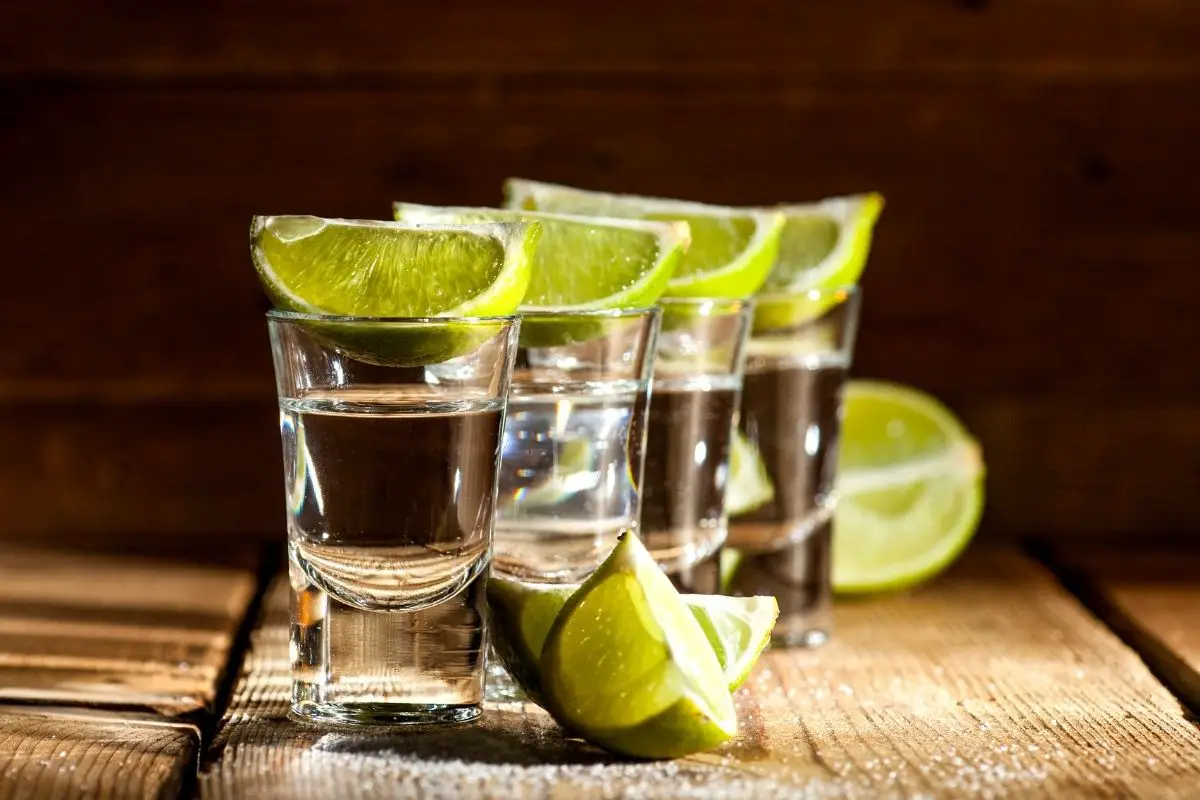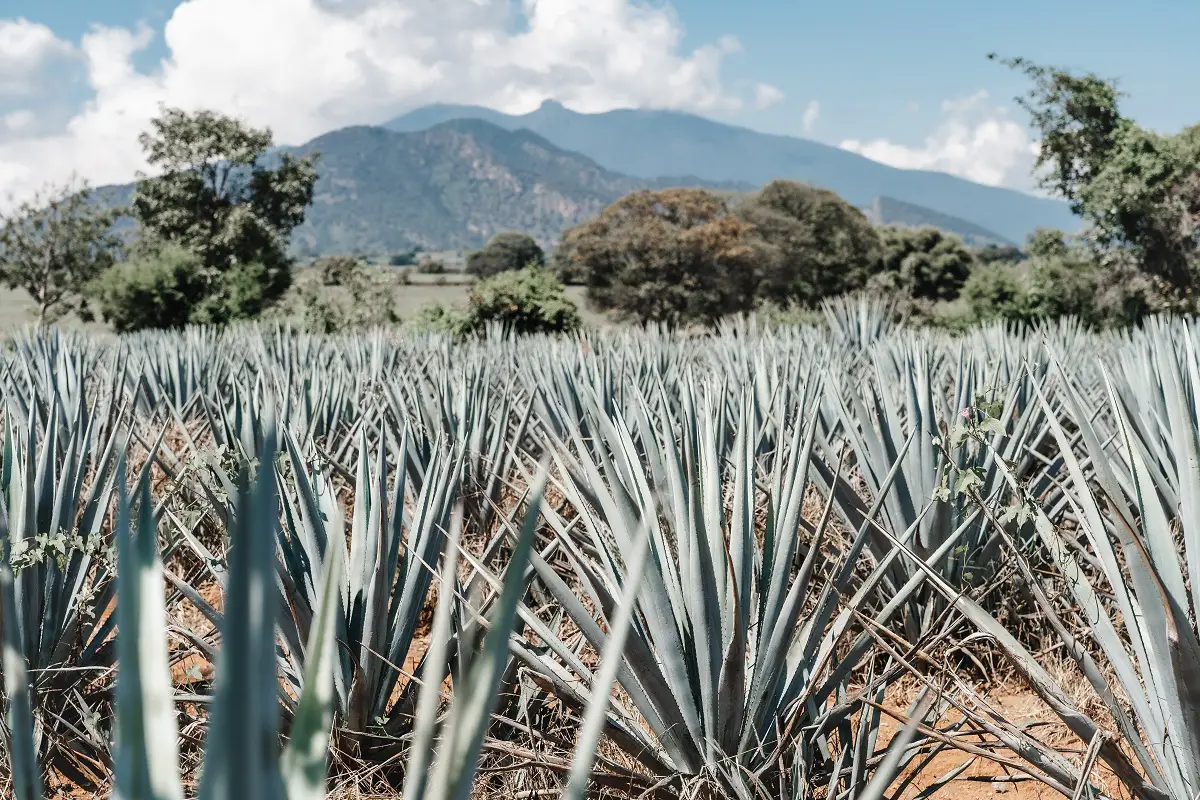It’s likely that most people who have ever been to a bar or gone to college will be familiar with tequila. It’s a unique spirit that is enjoyed all over the world and has a taste like no other.
It’s a spirit that is made using the agave plant and is normally enjoyed either in a cocktail like a margarita or sangria, or on its own as a shooter with lime and salt.

However you’ve tried tequila, you might have questioned how it’s made. This guide will examine its origins and how exactly the drink is created.
So, take a seat and get comfortable as we get into the world of tequila!
Where Did Tequila Come From?
Blue Weber agave plant is where Tequila gets its name (Agave tequilana). This is the only agave used in all the tequila drinks and to qualify as a real tequila, it has to come from one of five regions in its homeland of Mexico, where the agave plant grows naturally.
Before we look at these regions, we need to note here that if you look at a bottle of tequila and read that it is Blue agave 100%, you’ve got the most pure bottle of tequila you could possibly get!
So, these five regions of Mexico are:
- Nayarit
- Jalisco
- Tamaulipas
- Michoacan
- Guanajuanto
The heart of the agave plant looks like a pineapple, and that’s why it is known as a pina, which is Spanish for pineapple.
Inside Guanajuanto, you’ll find the town named Tequila and their production process differs from other tequila producing areas. They create some of the most well-known tequilas in the world, like Jose Cuervo.
Creating Tequila: Picking The Plant

Before tequila can be made, the agave plant must first be picked. Although above ground, the plant looks like that of a cactus, it’s related to the lily.
Once dug out of the ground, the pina (pineapple heart) is located. This heart must now be baked before any other things are done to it.
Baking The Hearts
Using a clay brick or stainless steel oven, the hearts will be baked by steaming them for around 2 or 3 days. Once this process has been completed, the hearts look like they have been caramelized and turn brown and mirror that of honeycombs.
The overall idea of the process is to convert the carbohydrates and the starches within the plant into sugars which can ferment. This is similarly to whiskey’s fermentation rationale with grains that become mash and then fermented.
Extracting The Juice From The Hearts
There are two main ways that the juice is extracted from the fibers of the heart. Some producers will go for the old-school way of crushing the hearts using a massive stone wheel and extracting the juices throughout the process.
Originally, the wheel was turned using horses or cows – but now, even though the process is outdated in some respects, the method of movement is now to use an engine or a large tractor.
However, more modern ideas are to use, similar to that in rum production, a mechanical shredder which squishes and separates the juice from the rest of the plant.
The Fermentation Process
Generally speaking, fermenting tequila is the same as any other spirit that is distilled. The water, yeast and sugars added to the mix will slowly convert the liquid into alcohol. Specific amounts of each are carefully added to make sure the drink is created correctly.
The tanks that are used for the fermentation are either wooden or stainless steel. This overall process will take a few days to complete, normally you can expect about 2 to 5 days , but it can be up to a week if there are problems.
The Stills
This is the part of the process where the liquid will finally become tequila, like the last point of its evolution. Two to four distillations are used to ensure the tequila becomes at least 40% ABV, which is 80 proof.
The mosto is added to the stills and boiled up. The condensation vapor is caught by the condenser and that specific vapor is then extracted and put into flasks.
The collected liquid is divided into sections; the head, the middle and the tail. Normally, producers will dispose of the head because they believe this is where the largest portion of impurities and “bad stuff” of the tequila are located.
More often than not, they will also remove the tail for the same reason. Either way, the middle is where the pure “good stuff” is.
Once this process has been completed, the liquid is now ready for either bottling or barreling. It is now time to consider the aging process of the drink.
Aging Tequila
Similar to some whiskey and bourbon, aging tequila is done using oak barrels and these barrels can only be used once. As with the prior drinks, the barrel will affect the overall flavor of the drink.
Blanco (white) tequila does not touch wood though and therefore remains clear white.
After tequila has been aged for long enough, it can now be bottled and ready for wholesale.
Bottling Tequila
Most bottles of tequila will have a rationale to their shape and this will come down to the story of the company.
Some places in Mexico choose to add a “worm” to the drink, which is a joke referring to the myth that worms were used in the process of tequila creation. In reality, this myth was true for another drink – but not tequila.
By adding this “worm” though, it has become a challenge for people to eat the now tequila stuffed larvae. Marketing savvy producers try to make this their USP.
After being bottled, the tequila is then boxed and shipped to their suppliers.
The Final Word
Tequila is a popular spirit, and it’s always good to know of its creation process and origins. We hope you’ve enjoyed our take on tequila today!
- Vevor Still Instructions - June 12, 2023
- Best Proofing Parrots For Home Distilling - February 1, 2023
- What Is A Porter Beer? - June 12, 2022
